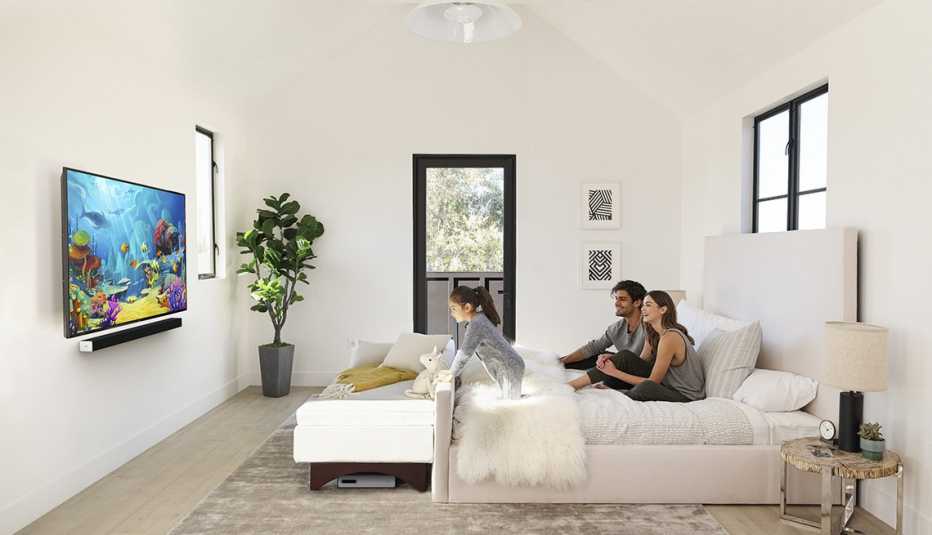AARP Hearing Center


You know it's time for a home theater makeover if:
a. You can't distinguish the color orange from the (new) black in your favorite prison show.
b. There's motion blur when people are running — and you're not watching The Flash.
c. The TV speakers aren't loud enough for you to hear Simon Cowell's insults.
d. You have more remotes on the coffee table than people in your home.
OK, so you get the point. I'll give up on a career in comedy and stick with tech.
While hypothetical, any of those issues means you might need a home entertainment refresh.
So why not take advantage of gift cards you received over the holidays — coupled with the fact retailers often discount older inventory ahead of Super Bowl Sunday — to treat yourself to a new television, better sound system or other home theater accoutrements?
Regardless of your budget, the following are a few picture-perfect suggestions tied to home entertainment.


Home theater on the cheap
Even without a big budget, you can build an impressive home theater.
1. Big screen. You can pick up a 65-inch Vizio V Series LED TV for $499. As with the other televisions mentioned in this article, this Vizio model is a 4K TV, which means it offers four times the resolution of a HDTV — about 8 million pixels, or dots, compared to 2 million — which translates to a lot more detail. You might also see a 4K TV described as a “2160p” TV, opposed to HD at 1080p.
In plain English, the higher the number, the better.
A feature called Dolby Vision HDR (High Dynamic Range) 10 means better contrast, brightness and more vivid colors compared to non-HDR televisions.
This Vizio V Series TV is also “smart"; therefore, you can connect it to your Wi-Fi network to stream video services such as Amazon Prime Video, Disney+ and Netflix. Plus this television supports Apple Airplay, so you can wirelessly access content from your compatible mobile device, including movies, music, photos and TV shows.
2. Audio. For amplified sound, the TCL Alto 7+ at $149 is a relatively inexpensive 2.1-channel soundbar system that includes a wireless subwoofer to put somewhere else in the room for deep bass.
Featuring a four-speaker enclosure — that's two woofers for low-frequency sound and two tweeters for high frequencies — it can significantly boost the audio from your TV. It's also a Bluetooth speaker, so you can wirelessly pair your smartphone and play music from it.



































































More on Home and Family
How to Safely Unsubscribe From Unwanted Emails, Texts
Simple steps to block spam and declutter your inboxTech for Older Adults Takes Spotlight at CES
Among the highlights of the annual show are devices that improve health care and AARP’s ‘pitch competition’
The Surprising Secrets Behind How Netflix Recommends Shows You Watch
Spoiler alert: You may not like what you learn